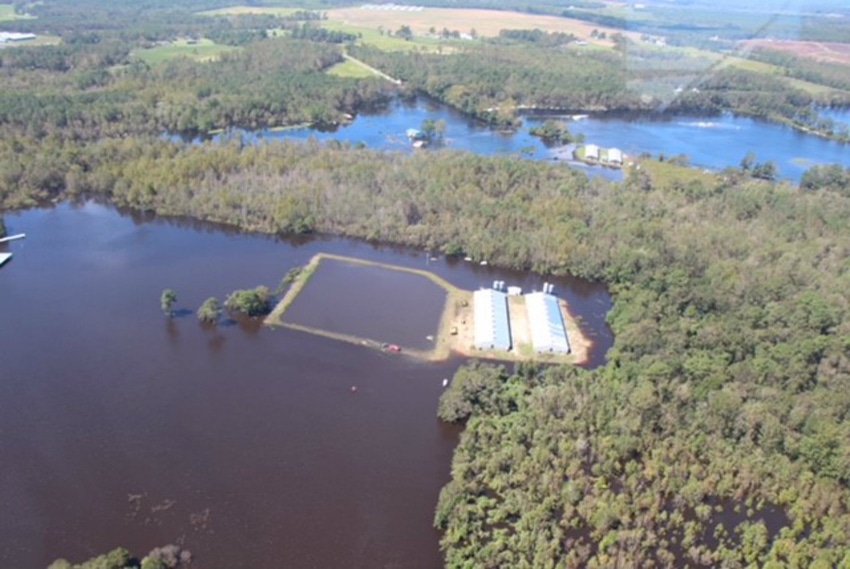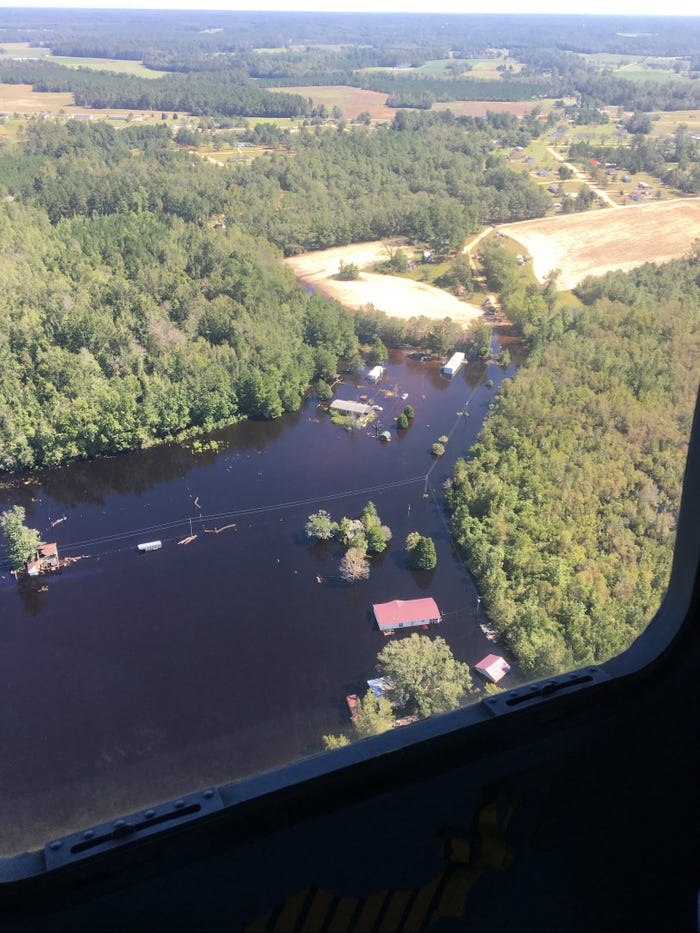
Both North Carolina Agriculture Commissioner Steve Troxler and South Carolina Agriculture Commissioner Hugh Weathers surveyed damage from Hurricane Florence by airplane Tuesday. In North Carolina, the area east of I-95 appears most devastated from the storm while in South Carolina, Dillon, Marion, Marlboro Counties - in that order – appear to be the most severely impacted by crop damage.
Troxler flew for five and half hours, surveying the worst areas impacted by Florence. He says many of the areas he surveyed showed utter devastation with nothing but rooftops sticking out and crops totally under water. He said it looks like it will be awhile before the water completely recedes in the most impacted areas.
“The duration of the event, when it started and when it ended made this storm particularly bad,” Troxler said. “The lower end of Duplin County, Pender County and Bladen County are totally devastated. Lumberton is almost completely under water. We’ve got flooding equal if not worse than Hurricane Matthew.”
Troxler said the impacted area runs from the southern part of the state to the northern part and then back toward Raleigh. “It’s a huge area. The area east of I-95 is where most our agriculture production and value is, and that’s where it is worse,” he adds.
A considerable amount of tobacco was harvested before the storm hit, but Troxler says a “goodly amount” is still in the field and is at least damaged. “Is it damaged beyond selling? We won’t know until they get the tobacco out of the barn,” he said.
“There are a lot of ifs right now. Unfortunately, it looks like the if is very negative,” Troxler said. “2015 was an exceptionally wet year in eastern North Carolina and then we had Hurricane Matthew in 2016. We had a decent crop in 2017 and now we have Florence. It’s been ugly, and we’re going to have to do everything we can to help our farmers so that they will be back again.”
Troxler says it is incredibly difficult for farmers to find encouragement amidst the devastation.
“Being a farmer myself I have lived through some disasters and I understand it. You don’t have a choice. You put your head down, you bow your neck and you go forward. After what I’ve seen, there are some definite disasters out there,” he said.
“Pray for the people in the affected area. Every time I do this, I come back almost distraught from what I’ve seen. When you see people’s homes under water, farms under water, crops under water, it’s a pitiful situation, but we in North Carolina have always been a place of partnerships and a place where neighbor helps neighbor and we will depend on that this time for a better outcome.”
In South Carolina, Weathers and U.S. Rep. Tom Rice (R-S.C.) flew over Chesterfield, Dillon, Florence, Hory, Marlboro and Marion Counties. Weathers reports that cotton was most impacted by high wind, followed by peanuts damaged by drenched soil and soybeans whose pods were blown from plants. He said Dillon, Marion, Marlboro Counties - in that order – appear to be the most severely impacted by crop damage.
“No crop was a total loss; those that suffered the most were the closest to harvest,” Weathers said.
“As I said to the farmers at one of the stops, this has become all too familiar. One of the farms we visited today, I’ve actually visited that same farm two of the last three years because of natural disasters,” he added.

An aerial view shows the utter devastation caused by Hurricane Florence in Dillon County, S.C.
About the Author(s)
You May Also Like






